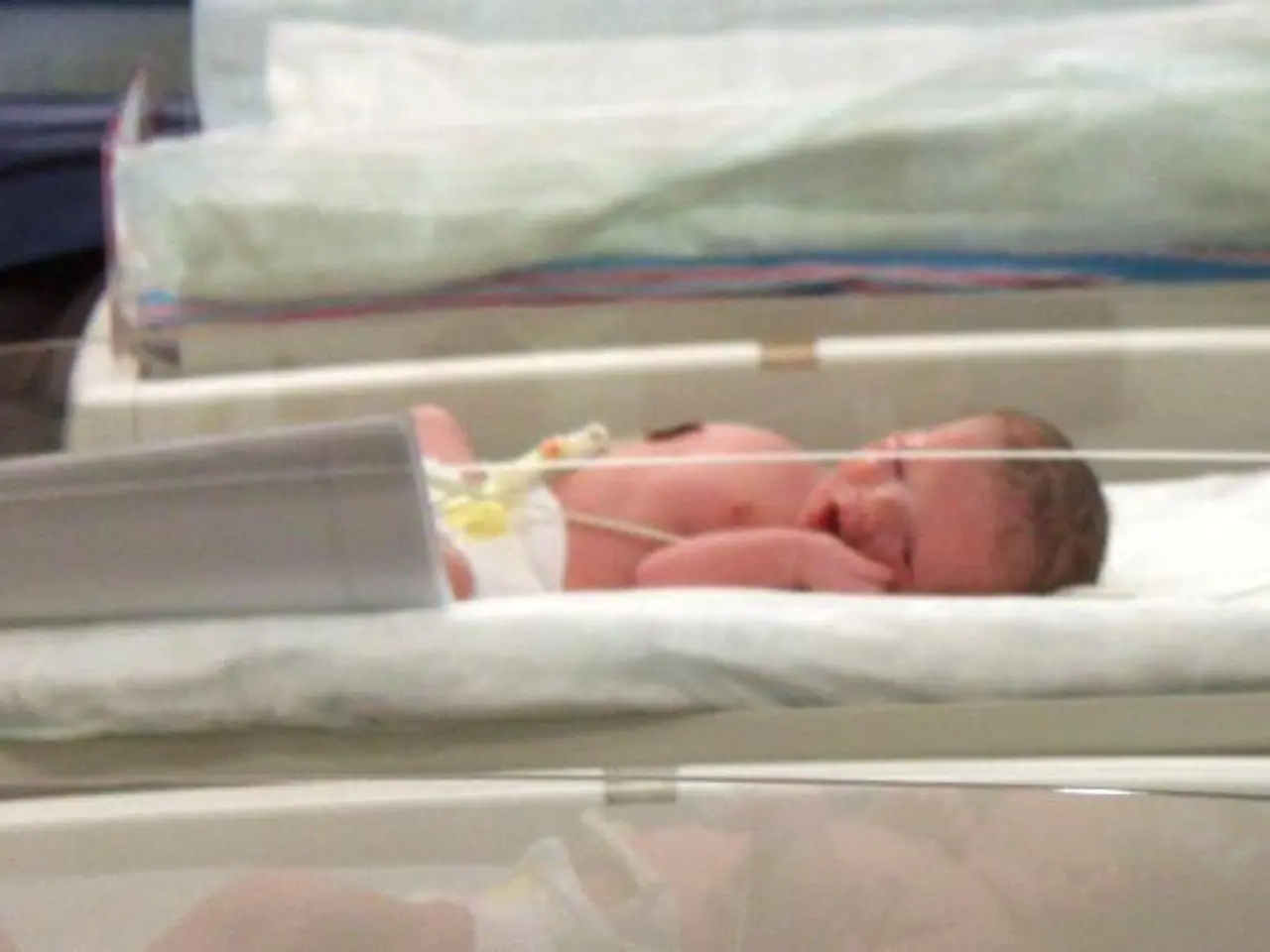Newborn Arrival from Archived Embryo: Child Born in 1994 Frozen Embryo is Now a Family
In the realm of assisted reproduction, a remarkable milestone has been achieved. An Ohio couple, Lindsey and Tim Pierce, have welcomed a baby boy, marking what is believed to be the longest storage time before a birth for a frozen embryo.
The concept of embryo adoption, where leftover embryos from In Vitro Fertilization (IVF) are used by other couples, has been around since the 1990s. The Pierces' son was born on Saturday, following the transfer of an embryo that had been frozen since 1994.
The key to such long-term viability lies in advanced cryopreservation methods, particularly vitrification, and storage at around -196°C in liquid nitrogen. This effectively halts cellular activity and preserves embryo integrity, as evidenced by successful pregnancies reported from embryos frozen for over 30 years.
In the United States, there is no federally mandated maximum storage time for frozen embryos. They can be preserved indefinitely as long as storage conditions are maintained. Clinics regularly monitor storage tanks to ensure embryo safety over long periods. This indefinite storage capability supports options such as embryo donation or adoption, providing opportunities for other parents.
Linda Archerd, the donor of the embryos used by the Pierces, turned to IVF in 1994 and wound up with four embryos. One of these embryos was shipped from Oregon to Tennessee, where the Pierces underwent the transfer at the Rejoice Fertility clinic in Knoxville.
The clinic, known for handling embryos stored in outdated containers, assisted in the transfer, setting a new record for the longest-frozen embryo to result in a live birth. Two embryos were transferred to Lindsey Pierce's womb, but only one successfully implanted. One of the three donated embryos did not make the thaw.
The Pierces did not go into the process thinking about records; they just wanted to have a baby. Despite the emotional roller coaster experienced by Linda Archerd during the donation process, she expressed hope that she will receive pictures and possibly meet the Pierces and the baby in the future.
It's worth noting that just about 2% of births in the U.S. are the result of in vitro fertilization, and an even smaller fraction involve donated embryos. The legal recognition of frozen embryos varies by state, with some recent court decisions granting frozen embryos legal status equivalent to children. This complexity impacts decisions about donation and storage duration.
For instance, a 2024 ruling by the Alabama Supreme Court classified frozen embryos as legal persons, influencing legal debates around embryo disposition. These developments complicate matters such as custody, donation, and disposal of frozen embryos, as laws vary widely across states and are influenced by ethical and political considerations.
In conclusion, the successful birth of the Pierce's baby boy from an embryo frozen for over 30 years underscores the advancements in cryopreservation techniques and the potential of embryo donation. As the legal landscape continues to evolve, the future of embryo storage and donation remains a topic of ongoing discussion and debate.
- Advancements in health-and-wellness, specifically cryopreservation techniques such as vitrification, have led to remarkable milestones in science, as evidenced by the birth of a baby boy from an embryo frozen for over 30 years.
- The potential of fitness-and-exercise is not limited to physical health; it also extends to the realm of science, as evidenced by the ongoing discussions and debates surrounding the legal status of frozen embryos and the impact of such decisions on embryo donation and storage duration.




